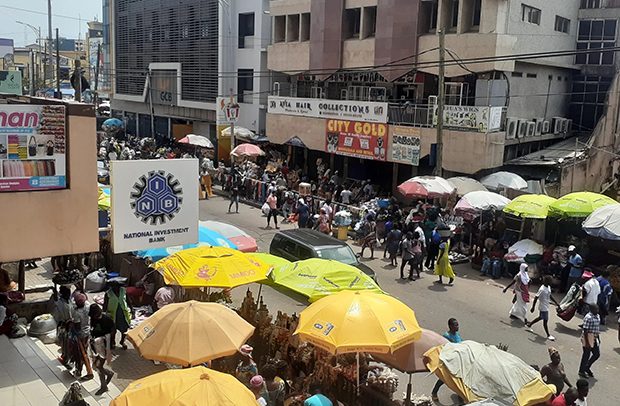
By Samuel Lartey(Prof)
As Ghana moves toward economic recovery, a new adjustment in utility tariffs has been announced, effective October 1, 2024. The Public Utilities Regulatory Commission (PURC) has raised electricity prices by 3.02% and water tariffs by 1.86%, part of its routine quarterly review to reflect changes in key economic indicators such as the exchange rate, inflation, and energy costs.
However, this seemingly modest upward revision puts both consumers and policymakers in a precarious situation—balancing the goals of economic recovery with the rising cost of essential services.
The Dilemma: Economic Recovery vs. Rising Costs
Ghana’s economy, like many across the globe, has been battling macroeconomic headwinds in recent years. Following the COVID-19 pandemic and other global economic shocks, the country has been striving to recover by stabilising its currency, boosting growth, and curbing inflation. Yet, this journey has been fraught with challenges, including a weakened currency and high inflation rates.
In the second and third quarters of 2024, the Ghanaian Cedi depreciated by 4.96% against the US Dollar. While Ghana has seen significant efforts to stabilise the Cedi, such currency fluctuations affect nearly every sector of the economy, particularly energy.
The exchange rate directly impacts the cost of imported goods, including natural gas and other energy inputs, which are critical for electricity generation in the country. As PURC noted, these macroeconomic pressures, along with rising inflation and natural gas prices, have necessitated this latest tariff adjustment.
The dilemma lies in the timing. While the modest increase of 3.02% in electricity tariffs and 1.86% for water might seem minor, it compounds the cost burden on citizens who are already grappling with rising living expenses. Ghana’s annual inflation rate has hovered between 42% and 50% throughout 2024, with food and energy costs being primary drivers.
Understanding the Tariff Adjustments
The tariff revision is part of PURC’s quarterly review process, designed to keep utility prices in line with economic realities. According to PURC’s September 28, 2024, statement, the adjustments were necessary to reflect changes in several key factors:
- Cedi Depreciation:
The Ghanaian Cedi depreciated by 4.96% against the US Dollar between Q2 and Q3 of 2024, making imported energy inputs more expensive.
- Natural Gas Prices:
The rising cost of natural gas, a critical input for electricity generation in Ghana, has exerted pressure on the cost of production for utilities.
- Inflation:
Annual inflation in Ghana remains high, fluctuating between 42% and 50% for 2024, further driving up operational costs for utilities.
With these macroeconomic indicators pushing operational costs higher, PURC had little choice but to pass some of these expenses on to consumers. Nevertheless, the public is concerned that even modest increases in utility bills may strain household budgets further, as they are already dealing with high prices for food, transportation, and other essentials.
How the Numbers Add Up
To fully understand the weight of this increase, let’s consider the economic context:
- Inflation:
As of September 2024, Ghana’s inflation rate remains high at 43.8%, according to the Ghana Statistical Service. This has significantly eroded the purchasing power of ordinary citizens.
- Exchange Rate:
Between July and September 2024, the Cedi depreciated from GH¢11.50 to GH¢12.07 per US Dollar, representing a 4.96% drop. The Cedi’s volatility directly impacts energy costs, especially for a country that imports a significant portion of its energy inputs.
- Energy Costs:
Ghana’s reliance on natural gas for electricity generation has increased in recent years. Global natural gas prices saw a 6% increase in 2024, with domestic gas prices similarly affected. This rise in costs filters through the entire production chain, making electricity generation more expensive.
The Impact on Consumers
While these increases seem small in percentage terms, they are substantial for many households already stretched thin by rising costs. According to a 2024 report by the Ghana Institute of Economic Affairs (IEA), average household utility expenses in urban areas constitute approximately 12% of monthly income.
With the new adjustments, this figure could rise, especially in lower-income households where utility bills represent a more significant portion of expenses.
Moreover, businesses, particularly in sectors like manufacturing and services, are likely to face higher operating costs due to these utility hikes. For companies struggling to recover from the economic downturn, this could affect their ability to maintain profitability, potentially leading to higher prices for goods and services.
Navigating the Challenges: Is There a Way Out?
The PURC’s decision underscores the delicate balancing act between maintaining a sustainable utility sector and shielding consumers from rising costs. Ghana, like many other developing economies, faces the challenge of ensuring that its infrastructure remains robust while also protecting its citizens from inflationary pressures.
Several steps could be taken to manage this dilemma more effectively:
- Energy Diversification:
Expanding renewable energy investments could reduce the country’s dependence on volatile natural gas markets. Solar, wind, and hydropower, already significant in Ghana’s energy mix, could help buffer the impact of global price fluctuations.
- Currency Stabilisation:
Efforts to stabilise the Cedi should remain a top priority. More stable exchange rates would ease the pressure on imported energy inputs, thereby reducing the need for frequent tariff adjustments.
- Targeted Subsidies:
The government might consider providing targeted subsidies to vulnerable households to cushion the impact of rising utility costs, ensuring that basic needs like electricity and water remain affordable.
- Utility Efficiency:
Utilities can invest in upgrading infrastructure and improving efficiency, thereby lowering operational costs and reducing the need for frequent price hikes.
The Path Forward
As Ghana’s economy continues its recovery, the country faces a difficult but necessary conversation about the true cost of maintaining essential services. The rise in utility tariffs, modest as it may be, reflects the broader economic pressures that the country is grappling with—ranging from inflation to currency depreciation.
These issues are deeply interconnected with global economic trends and domestic economic policies, making it crucial for the government and regulators to adopt a long-term approach to economic stabilisation.
The goal for policymakers should be to create an environment where the economy can grow without placing undue strain on households. While the 3.02% rise in electricity tariffs and the 1.86% increase in water tariffs may seem minor, they are indicative of a much larger problem, how to ensure that the benefits of economic recovery are shared evenly, without disproportionately affecting those who are already vulnerable to rising costs.
As the October 2024 tariff increases come into effect, Ghanaians are left to hope that future adjustments will be fewer and far between, allowing households and businesses to stabilize their finances while contributing to the broader economic recovery. However, as it stands, the country faces the dilemma of balancing the costs of essential services with the need to sustain its economic growth.
Conclusion
The 2024 tariff increase by the PURC highlights the ongoing challenges of balancing economic recovery with the rising costs of living. With inflation still high and the Cedi under pressure, these adjustments reflect the need to ensure the sustainability of the utility sector.
However, without meaningful interventions such as energy diversification, currency stabilisation, and targeted support for the most vulnerable, Ghana’s path to recovery may come at a higher cost for everyday citizens. It is essential for all stakeholders to work together to navigate this complex issue, ensuring that economic progress benefits all Ghanaians.
The post Balancing a recovering economy with rising utility costs appeared first on The Business & Financial Times.
Read Full Story






















Facebook
Twitter
Pinterest
Instagram
Google+
YouTube
LinkedIn
RSS